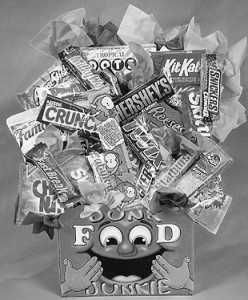Tracey Cheek, Staff Writer

Imagine growing up in an elementary school without being able to buy those cheddar fries at lunchtime, or in middle school without having a hot fudge sundae Pop-Tart to get you through the day. On Friday, February 1, local school officials said they support the decision made by the U.S. Agriculture Department to ban the sale of junk foods. Some schools have been working on achieving healthier options for years, and now the day has finally come.
This ban of junk food consists of taking away products like soda and potato chips, and replacing them with fruits and vegetables. A big focus, however, is on portion control. Schools are still serving “junk food,” such as cookies and brownies, but cut down the size of them. Junk food consists of food with low nutritional value, easy to prepare, and pre-package. Most schools have already taken soda off of their shelves and out of the vending machines while baked chips are replacing the old, fatty bags of chips that are overloaded with salt. Instead of buying pre-made and processed foods, local schools have been preparing meals from scratch – even using fresh and local produce. Schools report that students are not very happy at first with their new snacking options, but they quickly adapt to them. Although when we were younger Dunkaroos made you the coolest kid in the cafeteria, it is a much wiser choice to replace those and other junk foods with a fruit parfait or an apple with peanut butter.
According to the Student Weight Status Category Report of 2008-2010, 15 percent of students were reported to be overweight and 17 percent of students to be obese. Together that is about a third of the students grades K-12 with obesity issues, which will affect them later on in life. Causes of this are lack of eating fruit and vegetables, drinking sugary fruit juices instead of natural ones and high soda consumption. As argued by The Center for Disease Control and Prevention (CDC), in 2011 numbers began to drop slightly: 11 percent of students were obese. Solutions to this problem involve more PE programs including higher-paced activities, healthier lunch and snack options and overall better health education.
If changes like this are implemented in younger-level schools, children will be able to carry smart food choices into their adult lives. There are many students here on campus that take advantage of the healthy options SUNY Oneonta offers us. Whether it’s stir-fry from O-Healthy, vegetarian options from the Wild Mushroom or some food with a home-cooked taste from My Kitchen, there are endless healthy options around us. Check out the menus online to see what each dining hall has to offer, and feel free to print out a “Healthy Salad Scorecard,” to make sure you get what you need in the salads you make!
Leave a Reply